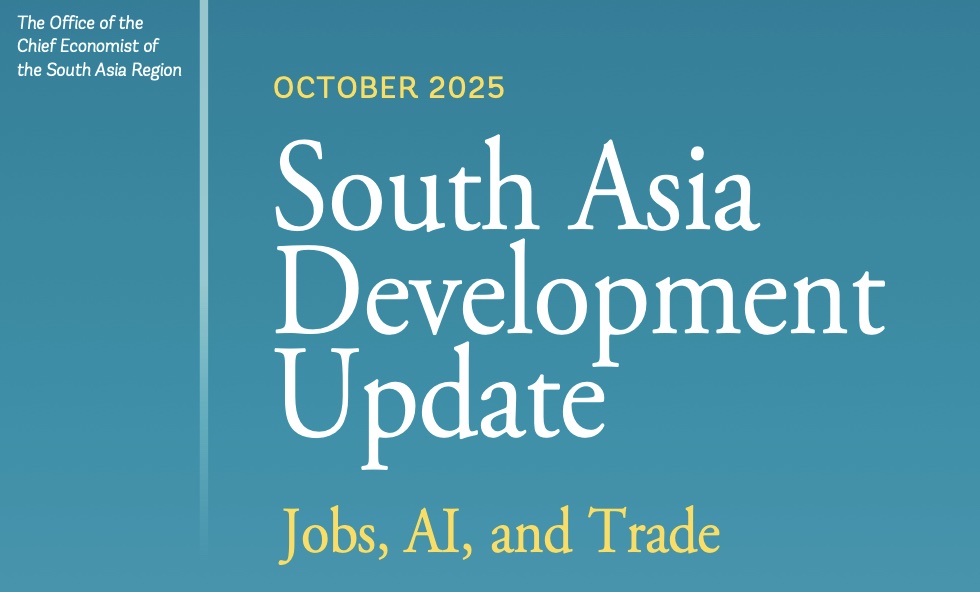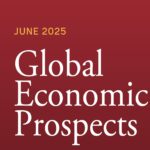The World Bank’s latest South Asia Development Update projects the region’s economic growth to remain strong at 6.6 percent in 2025, but warns of a significant slowdown ahead, citing trade barriers, global uncertainty, and disruptions linked to artificial intelligence (AI).
Released on October 7, 2025, the report titled “South Asia Development Update: Jobs, AI, and Trade” emphasizes that reforms promoting trade openness and technology adoption could help the region sustain growth and generate employment. However, growth is expected to moderate to 5.8 percent in 2026, a downward revision of 0.6 percentage points from the World Bank’s April forecast.
“South Asia has enormous economic potential and is still the fastest growing region in the world. But countries need to proactively address risks to growth,” said World Bank Vice President for South Asia, Johannes Zutt. “Countries can boost productivity, spur private investment, and create jobs for the region’s rapidly expanding workforce by maximizing the benefits of AI and lowering trade barriers, especially for intermediate goods.”
The report highlights that South Asian economies remain among the least open to global trade and finance. High tariffs, particularly on intermediate goods used in manufacturing, are constraining competitiveness. The region’s average tariffs on these components are more than double those of other emerging markets.
Conversely, sectors such as services, which face lower tariffs, have driven nearly three-quarters of employment growth over the past decade. The World Bank suggests that carefully phased tariff reductions, particularly within broader free trade agreements, could unlock private investment, strengthen competitiveness, and create substantial job opportunities.
Adding to the headwinds, the report notes that the United States implemented new tariffs on South Asian exports in August 2025, following several months of delays and adjustments. These include 50 percent on India, 20 percent on Bangladesh and Sri Lanka, and 10 percent on Nepal, Bhutan, and the Maldives.
The World Bank raised its 2025 growth forecast due to higher-than-expected public investment in India and a broad-based recovery in Sri Lanka. However, it revised 2026 projections downward, as these effects are expected to fade and India faces continued tariff pressures on goods exports to the U.S.
Despite the moderation, South Asia is expected to outpace other emerging market and developing economies. The report warns, however, that high debt levels and low foreign exchange reserves continue to pose vulnerabilities, though most countries are gradually addressing macroeconomic imbalances such as current account deficits.
The World Bank cautions that regional stability remains fragile, citing recent public uprisings in Nepal (2025), Bangladesh (2024), and Sri Lanka (2022) that have disrupted governance and investor confidence. Broader risks from sluggish global trade and prolonged trade tensions could further constrain South Asia’s export-driven sectors.
The report underscores AI’s transformative impact on global labor markets and its dual potential to displace and create jobs. While most South Asian workers remain insulated due to the dominance of low-skill and agricultural jobs, moderately educated, younger workers in business services and information technology face growing vulnerability.
It notes that since the launch of ChatGPT, job listings in occupations most exposed to AI have dropped by around 20 percent compared to other fields. However, demand for AI-related skills is surging, with such positions offering a 30 percent wage premium over other professional roles.
The World Bank calls for policies that enable economies to adapt and capitalize on AI-driven change, including:
- Reforming size-dependent regulations that inhibit business growth
- Enhancing digital and transport connectivity
- Expanding housing and labor mobility
- Investing in skills training and job-matching systems
- Establishing safety nets for displaced workers
“Increasing trade openness and growing adoption of AI could be transformative for South Asia,” said World Bank Chief Economist for South Asia, Franziska Ohnsorge. “Policy measures to facilitate the reallocation of workers across firms, activities, and locations can help channel resources to productive sectors and are critical for boosting investment and job creation in the region.”






